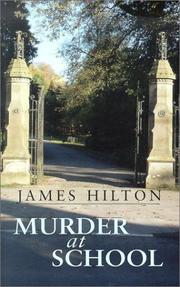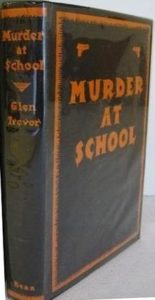CONVERSATION WITH JIM AUSTEN
Q: Explain what you mean by a mash-up novel.
A: A mash-up novel is a work of fiction that combines a preexisting literary text, often a classic work of fiction in the public domain, with another genre, in this case the gay romance genre, into a single narrative with new plot twists and themes added by a contemporary author.
 Q: Why did you choose the James Hilton novel Murder at School as the foundation for your gay mash-up?
Q: Why did you choose the James Hilton novel Murder at School as the foundation for your gay mash-up?
A: I found a copy of Murder at School by James Hilton (of Goodbye, Mr. Chips fame) in a used bookstore. Although the Hilton novel had no gay characters, any book about an all-boys public school is fertile ground for gay themes. The novel had an unspoken homoeroticism that demanded liberation.
Q: Can you be more specific about those events in Hilton’s book that caught your interest?
 A: Although there are no gay references in the original novel, I was struck by one scene in which Headmaster Roseveare asks Colin Revell, a former student:
A: Although there are no gay references in the original novel, I was struck by one scene in which Headmaster Roseveare asks Colin Revell, a former student:
“Are you interested, by the way, in etchings? I have one or two that are considered rather choice.”
I laughed when I read that. This is the timeworn proposition employed by a Victorian novelist when the licentious cad tempts a young woman up to his rooms. What was Hilton thinking when he added this short scene to his novel? I immediately visualized a scene when Colin was at a public school:
“Colin nearly laughed at Roseveare’s innocent remark, recalling an Oxford don who had dangled his collection of “rather choice etchings” to seduce the more artistic and handsome of his students. His proclivities were well known in certain circles. When the don, a middle-aged, reasonably attractive, married man, invited Colin to tea and a “viewing,” he eagerly accepted.”
The deciding factor to “mash” in a gay story line was the two young men, Colin and Max, as the central characters. Their friendship in the original text is not sexual but making them gay lovers almost wrote itself. My unsubstantiated fantasy is that Hilton originally wrote them as lovers but was asked to eliminate this by his editor.
Q: Were there plot modifications required to accommodate the change in the sexuality of the two main characters?
A: This mash-up is in the tradition of the rescue romance in which one lover comes to the aid of the other man. Readers of M/M romance novels have certain expectations: no matter what happens during the novel, they expect that the lovers will be happily reunited at the end of the book. When the police officer masquerading as Max’s brother appears at the end of the original novel, I, as the reader, misread his introduction. [Spoiler alert] Reading the last name Lambourne and overlooking his first name, I thought Max had come back from the dead. When I realized my mistake, I thought, “Why not have Max alive at the end of the novel?” To accomplish this, the murder/suicide of Max in the original text had to be faked. Changing the plot to accommodate this twist required modifying several scenes, which also lengthened the explanation of the mystery at the end of the novel. Hopefully, these changes seem realistic and believable.
Q: Were there any other changes required to accommodate the sexuality of the two characters?
A: Both Max and Colin are attracted to Mrs. Ellington in the original text. [Spoiler alert] Besides adding some obligatory romantic interest, Hilton probably included this theme to help distract the reader from suspecting Mrs. Ellington as the murderess. I decided to keep this misdirection. While a gay man can be attracted to a woman, I soft-pedalled the heterosexual attraction, removing any suggestion of a sexual affair. In the case of Max, his relationship included thoughts of marriage encouraged by Mrs. Ellington’s psychological support. But even Colin had a transitory belief that he and Mrs. Ellington could be happy living as bohemian friends.